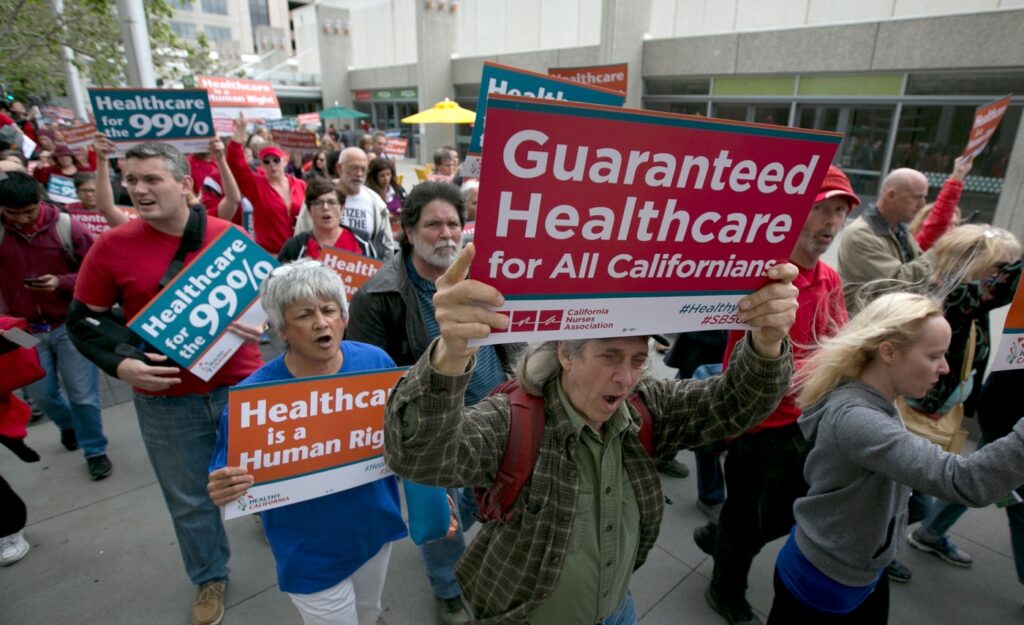
It takes only three letters to explain why the idea of single payer health insurance keeps getting shot down quickly in the California Legislature: EDD.
No program in state, city or local government has shown itself less competent over the last few years than the state Employment Development Department’s unemployment insurance system, which lost a reported $20 billion to fraudulent claims during the first 18 months or so of the coronavirus pandemic.
Yes, the EDD was flooded with claims in that time of massive layoffs. But it was woefully unprepared for the many fraud schemes brought to bear against its funds during that most fraught of times.
Yes, the EDD has clawed back a few billion of the dollars that went to fake claimants all over the world.
But its demonstrable incompetence under three different department directors causes millions of Californians to wonder why anyone should entrust massive sums of money to the state for distribution to legitimate claimants.
And make no mistake about single payer: It would involve sums far larger even than the approximately $180 billion passed out by EDD over the first year and a half of the pandemic.
This year’s proposal, carried by Democratic Assemblyman Ash Kalra of San Jose, would have entailed an annual expense of close to $400 billion, well in excess of California’s general fund budget.
Some of that money would have come from redirected health insurance premiums, both for private insurance and for Medicare – if the federal Medicare system would agree to giving up more than 10 percent of its cash flow. Some would have come from money given California by the federal Medicaid system, known here as Medi-Cal. But that still would have left many billions to be raised, presumably by the largest tax increase in state history.
Just how difficult this financing would have been to acquire was demonstrated when Kalra’s AB 1400 spelled out what single payer would do and what it would be – essentially Medicare for all, with no more insurance company involvement and no more distinction between Medi-Cal patients and everyone else. It did not say where the money for this would come from.
Kalra’s bill went nowhere despite the fact that the extreme liberal Democratic politicians who now run Sacramento, from Gov. Gavin Newsom through Assembly Speaker Anthony Rendon and state Senate President Toni Atkins of San Diego, all have long backed the single payer idea.
That was largely because many Assembly Democrats didn’t want to be forced to go on the record for or against single payer, especially in an election year when some will face new constituents during the June and November votes.
So Kalra’s bill died, at least for this year, without any vote taken, and without many politicians forced to take positions for which they could be held responsible.
No one said so, but one of the main reasons was the EDD debacle. If the state could not safeguard unemployment insurance dollars paid in by many thousands of employers, why would anyone think it capable of handling far more money paid in by tens of millions of individuals?
The single payer proposal especially offended current Medicare subscribers, who benefit from a system long opposed by Republicans – but embraced even by them in recent years because it works.
Related Articles
It’s time to fix rising gas prices: Jay Obernolte
Putting some WD-40 on the U.S. supply chain
Todd Spitzer’s unjust approach to justice fails the mentally ill and the homeless
Stadium deal won’t salvage Anaheim’s mistake
Newsom opens up to keeping nuclear power
Typical is the coverage Medicare affords for heart bypass operations. First, it knocks down the price asked for such procedures (and most others) by hospitals and doctors. Then it pays 80 percent of what it allows. Medicare subscribers (mostly people over 65, but also including younger kidney dialysis patients and some others) can get the other 20 percent paid by supplemental insurance policies widely offered in months-long signup periods.
Astonishingly, there is relatively little fraud in Medicare claims.
Medicare paid out $718 billion in claims in 2018, the last year for which totals are available. Known fraud against the system last year totaled just $1.4 billion, well under 1%, and actions were taken against 142 individuals, including only 42 doctors and nurses.
No wonder so many want Medicare for all. They certainly don’t want EDD for all and until there is certainly that would not befall California under single payer, it won’t happen.
Email Thomas Elias at tdelias@aol.com.
